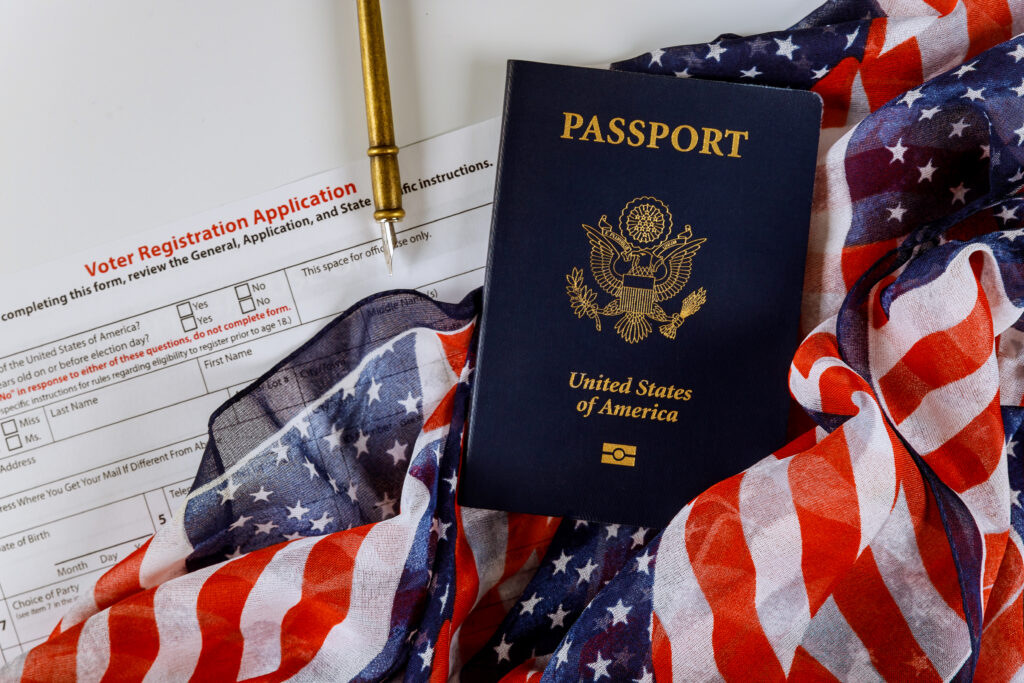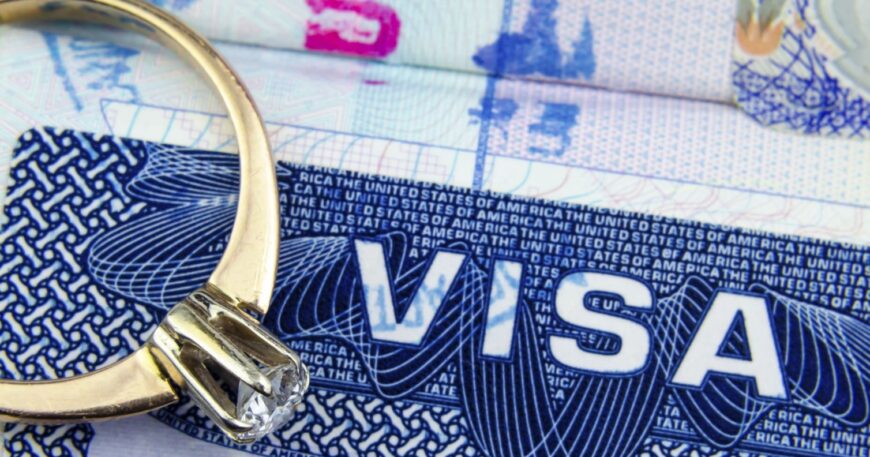Everything You Need to Know About the H1B Visa: A Complete Guide for 2025
Navigating the U.S. immigration system can be complex, especially when securing a work visa. One of the most common ways international professionals work in the U.S. is through the H1B visa program. Whether you’re an employer looking to sponsor a skilled worker or an individual interested in applying, understanding the intricacies of the H1B visa, its status, and how it leads to a Green Card is crucial for a successful application.
We’ll answer our most pressing questions about the H1B visa, explore how it transitions to a Green Card, and provide insight into tracking your H1B visa status. Let’s dive into the key aspects of the H1B visa and everything you need to know to move forward confidently.

What Is the H1B Visa?
The H1B visa is a non-immigrant visa that allows U.S. companies to employ foreign workers in specialty occupations that require theoretical or technical expertise. These professions often include information technology (IT), engineering, medicine, finance, etc. The H1B visa program is essential for businesses in the U.S. that need highly skilled workers worldwide.
The visa is typically valid for three years but can be extended for an additional three years, giving foreign professionals the chance to work and live in the U.S. While the H1B visa is designed for temporary employment, it also provides a path to permanent residency, which makes it particularly attractive for individuals hoping to transition to a Green Card in the future.
How Does the H1B Visa Lead to a Green Card?
For many foreign professionals, the H1B visa is not just a temporary solution but a stepping stone to permanent residency in the U.S. Many visa holders eventually seek a Green Card (permanent residency), but transitioning from an H1B visa to a Green Card is a multi-step process that requires careful planning and attention to detail.
Here’s an overview of how the process works:
- Labor Certification (PERM Process):
The first step towards a Green Card is typically the labor certification process. It involves the employer proving that no qualified U.S. worker is available for the position the foreign worker will fill. This is done through the Department of Labor (DOL), and once approved, it allows the employer to sponsor the foreign worker for permanent residency. - Filing an I-140 Petition:
After the labor certification process, the employer can file an I-140 petition for the foreign worker. It is the official request for the worker to become a permanent resident, and it must be approved by U.S. Citizenship and Immigration Services (USCIS). - Adjustment of Status or Consular Processing:
Once the I-140 petition is approved, the worker can either adjust their status (if they’re already in the U.S.) or go through consular processing (outside the U.S.). The adjustment of status process is done by filing an I-485 form with USCIS, and upon approval, the worker becomes a U.S. permanent resident (Green Card holder).
This process can take several years, depending on visa availability, the worker’s origin, and processing times. Staying updated on the current processing times and requirements is essential, as they can change depending on the year and specific circumstances.
What Is H1B Visa Status and How Can You Check It?
The status of your H1B visa is crucial, as it determines your ability to stay and work in the U.S. To ensure everything is on track, keeping track of your H1B visa status is essential. Here’s how to understand and monitor your H1B visa status:
How to Check Your H1B Visa Status
- USCIS Case Status Online:
The first and easiest way to check your H1B visa status is by using the USCIS Case Status Online tool. When your H1B petition is filed, you will receive a receipt number from USCIS. You can enter this number into the online tool to get real-time updates on your application status. - Processing Times:
USCIS also provides estimated processing times for H1B visa applications. Remember that these times can vary depending on how the service center handles your case. The processing time may sometimes range from several months to over a year. - Requesting an Update:
If you haven’t updated in a while or there’s an issue with your case, you can contact USCIS customer service. It’s also an idea to contact your employer’s immigration attorney for assistance, especially if there are delays or complications with your status.
Important Status Updates to Look Out For
- Approved: If your application has been approved, you can proceed with the following steps: getting your visa stamped at the U.S. embassy or applying for a Green Card.
- Denied: In the case of a denial, you’ll receive notice with the reason for the denial. If this happens, you may be able to appeal the decision or reapply if there were errors in your submission.
- RFE (Request for Evidence): If USCIS needs more information to decide on your application, they may issue an RFE. It’s essential to respond promptly and accurately to any requests for additional evidence.
- Pending: Your case may still be in progress. You can continue to check your status online to see if there are any updates.
Keeping an eye on your H1B status and responding promptly to requests or notifications will help ensure your visa process goes smoothly.
Common Issues and Challenges With the H1B Visa Process
While the H1B visa is an excellent option for skilled foreign workers, the process is challenging. Some of the most common issues and obstacles applicants face include:
- Cap Restrictions:
The number of H1B visas issued yearly is capped, and the demand for these visas often exceeds the supply. Only the highest-ranking applications (based on a lottery system) are approved. This can make the process uncertain for applicants. - Employer Sponsorship:
Employers must be willing to sponsor foreign workers for the H1B visa. Some companies may hesitate to invest time and resources into the sponsorship process, particularly if the employee’s remuneration is considered less specialized or uncertain about the position’s long-term prospects. - Processing Delays:
The H1B visa process can be slow, and delays are common, especially if there are issues with the paperwork or many applications in the system. It’s essential to plan and allow plenty of time for processing.
Conclusion: Understanding the H1B Visa Process in 2025
The H1B visa is a vital pathway for skilled foreign professionals to live and work in the U.S., providing them with valuable experience and a chance to build a career in a global economy. Whether you’re applying for an H1B visa, transitioning from an H1B visa to a Green Card, or tracking your visa status, understanding the process is key to success.
Stay proactive in monitoring your visa status and work closely with your employer and immigration attorney to ensure everything proceeds smoothly. With the proper guidance and preparation, your H1B visa can be the first step toward a long-term, fulfilling career in the U.S.
Frequently Asked Questions
What is the H1B visa?
The H1B visa is a non-immigrant visa that allows U.S. employers to hire foreign workers for specialty occupations requiring IT, engineering, and healthcare expertise.
Can I switch employers while on an H1B visa?
Yes, changing employers while on an H1B visa is possible, but the new employer must file a new H1B petition for you. You can start working with the new employer when USCIS receives the latest petition.
How long can I stay in the U.S. with an H1B visa?
The H1B visa is initially granted for three years and may be extended for another three years. After that, you must either transition to a different visa type or apply for permanent residency (Green Card) to continue staying in the U.S.
How does the H1B visa lead to a Green Card?
The H1B visa can serve as a stepping stone to a Green Card. Once on an H1B, an employer can sponsor you for permanent residency by initiating the PERM labor certification process, followed by filing an I-140 petition and, ultimately, the I-485 form for adjustment of status.
What happens if my H1B visa application is denied?
If your H1B visa application is denied, you will receive a notice from USCIS detailing the reason for the denial. Depending on the circumstances, you may be able to appeal the decision or reapply, addressing the issues raised in the denial notice.
How can I check the status of my H1B visa application?
You can check your H1B visa application status using the USCIS Case Status Online tool, entering the receipt number provided after submission. This tool gives real-time updates on your case, including whether it has been approved, denied, or if additional evidence is required.
Conclusion
In 2025, understanding the intricacies of the H1B visa process, from application to tracking your visa status, is more critical than ever. With precise knowledge and preparation, both applicants and employers can ensure a smoother journey through the U.S. immigration system, whether the goal is short-term employment or transitioning to a permanent residence via a Green Card.
As a highly skilled professional, the H1B visa offers a unique opportunity to advance your career in the U.S. However, as the process can be lengthy and complex, it is essential to stay informed and seek expert advice when needed to ensure the best possible outcome for your application.
Whether you’re just starting the process or are navigating your status, keeping a close eye on deadlines and requirements will help you stay on track and succeed in obtaining your H1B visa and, eventually, a Green Card.

Additional Tips for H1B Visa Applicants
When applying for an H1B visa, it’s important to remember specific details that make the difference between approval and denial. Understanding these tips and common mistakes will help you better prepare for the application process.
1. Plan and Start Early
The H1B visa process involves several steps that can take months, including gathering documents, submitting applications, and waiting for approval. Employers must submit petitions by April 1st each year, and the process can take up to 6 months for approval or longer in some cases. Starting early will ensure you don’t miss deadlines and provide ample time to handle unexpected issues.
2. Ensure Job Descriptions Match Specialty Occupation Requirements
One common reason for H1B visa denials is the mismatch between the job description and the requirements for a specialty occupation. To qualify for an H1B visa, the job must require at least a bachelor’s degree equivalent in a specialized field. Ensure your job description reflects this requirement to avoid delays or rejection.
3. Prepare Proper Documentation
USCIS will ask for much documentation during the H1B visa application process. This includes educational credentials, work experience, and evidence that the job qualifies as a specialty occupation. Employers and applicants should work together to ensure all required documents are accurate and complete. This reduces the chances of delays and increases the likelihood of approval.
4. Stay Compliant with Visa Regulations
Once you receive the H1B visa, you must comply with all visa regulations. This includes maintaining your employment with the sponsoring employer, not exceeding the maximum allowable stay, and reporting any changes in your personal or employment situation. Staying compliant will ensure you don’t jeopardize your ability to extend your visa or transition to a Green Card.
5. Consult with an Immigration Attorney
The H1B visa process is not without complexities, and it’s always best to consult an immigration attorney. A qualified lawyer can guide the employer and employee through the process, help with paperwork, and provide legal advice if complications arise. Legal experts can also assist with filing appeals if your petition is denied.
Preparing for the H1B Visa Interview
In some cases, H1B visa applicants may need to attend an interview at a U.S. consulate or embassy. This step typically occurs after USCIS approves your petition but before you can travel to the U.S. Here’s how it is for the H1B visa interview:
1. Understand the Interview Process
The H1B visa interview is usually straightforward and involves questions about your qualifications, the employer, and your intent to return to your home country if your visa status changes. The interviewer will also assess your overall eligibility for the H1B visa.
2. Prepare Your Documents
Bring all necessary documents to the interview, including your passport, the USCIS approval notice (Form I-797), proof of education, proof of employment, and any other supporting documentation showing you meet the qualifications for the specialty occupation.
3. Be Honest and Confident
Be ready to answer questions about your background, job, and qualifications. Truthful and consistent answers will help establish credibility and build confidence with the consular officer.
4. Dress Professionally
Although the interview is not a job interview, first impressions matter. Dressing professionally helps present you as a serious candidate for the visa.
H1B Visa Denials and Appeals
It can be frustrating if your H1B-visa application is denied, but options are available. One option is to appeal the decision, although this depends on the nature of the denial. Here’s what if your application is rejected:
1. Understand the Reason for Denial
USCIS will explain the denial. Common reasons include incomplete applications, failure to prove the job is a specialty occupation, or issues with the applicant’s dependents. Understanding the specific reason for the denial is crucial for determining whether an appeal is possible.
2. Request a Reconsideration
If you believe the denial was a mistake, you can file a motion to reopen or reconsider the decision. This process asks USCIS to review the case again, considering new or additional information.
3. Appeal the Decision
You may appeal to the Administrative Appeals Office (AAO) if your reconsideration request is denied. This is a more formal process and typically takes longer than the motion for reconsideration. You’ll need to file your appeal within 30 days of the decision.
4. Reapply for the H1B Visa
If the appeal is denied, you can reapply for the H1B-visa the following year (if the cap allows) or try a different visa program, such as the L1 visa for intra-company transfers.

Final Thoughts on the H1B Visa Journey
For skilled foreign workers, the H1B-visa offers a unique opportunity to live and work in the United States, contributing to the growth of U.S. industries and gaining invaluable experience. While the application process can be time-consuming and challenging, careful planning, understanding the steps involved, and following best practices can help you navigate it successfully.
Whether you’re applying for the H1B-visa for the first time or are transitioning to a Green Card, staying informed and working closely with your employer and legal advisors is the best way to increase your chances of success.
Contact Us at Syed Professional Services for Your Appointments
At Syed Professional Services, we prioritize making your experience as seamless and efficient as possible. Whether you seek assistance with business consultations, legal services, or personal appointments, our dedicated team guides you every step of the way.
How to Reach Us:
We offer multiple ways to get in touch with us to suit your preferences:
- Phone: Call us directly at [(718) 859-5392] during business hours, and one of our friendly representatives will be happy to assist you with scheduling your appointment, answering your questions, or providing the information you need.
- Email: For more detailed inquiries or if you prefer written communication, feel free to email us at [[email protected]]. We aim to respond to all email queries within 24 hours.
- Online Appointment Booking: For your convenience, we have an online booking system available on our website. Visit [SyedPro.us], select the required service, and choose a time slot that works for you. This quick and easy option ensures you can schedule your appointments anytime, from anywhere.
- In-Person: Our office is at [1012 Coney Island Ave, Brooklyn, NY 11230] if you prefer face-to-face interaction. We welcome walk-ins and are ready to assist you in person during our business hours. Please note that scheduling an appointment beforehand is recommended to ensure availability.
Why Choose Syed Professional Services?
We pride ourselves on providing top-notch customer service, ensuring that all your needs are met professionally and efficiently. Our team of experts is committed to helping you find the right solutions for your unique needs. At Syed Professional Services, your satisfaction is our top priority, and we look forward to serving you.




